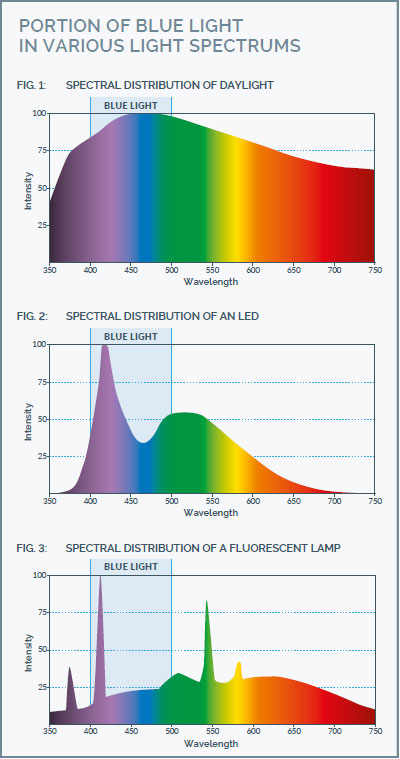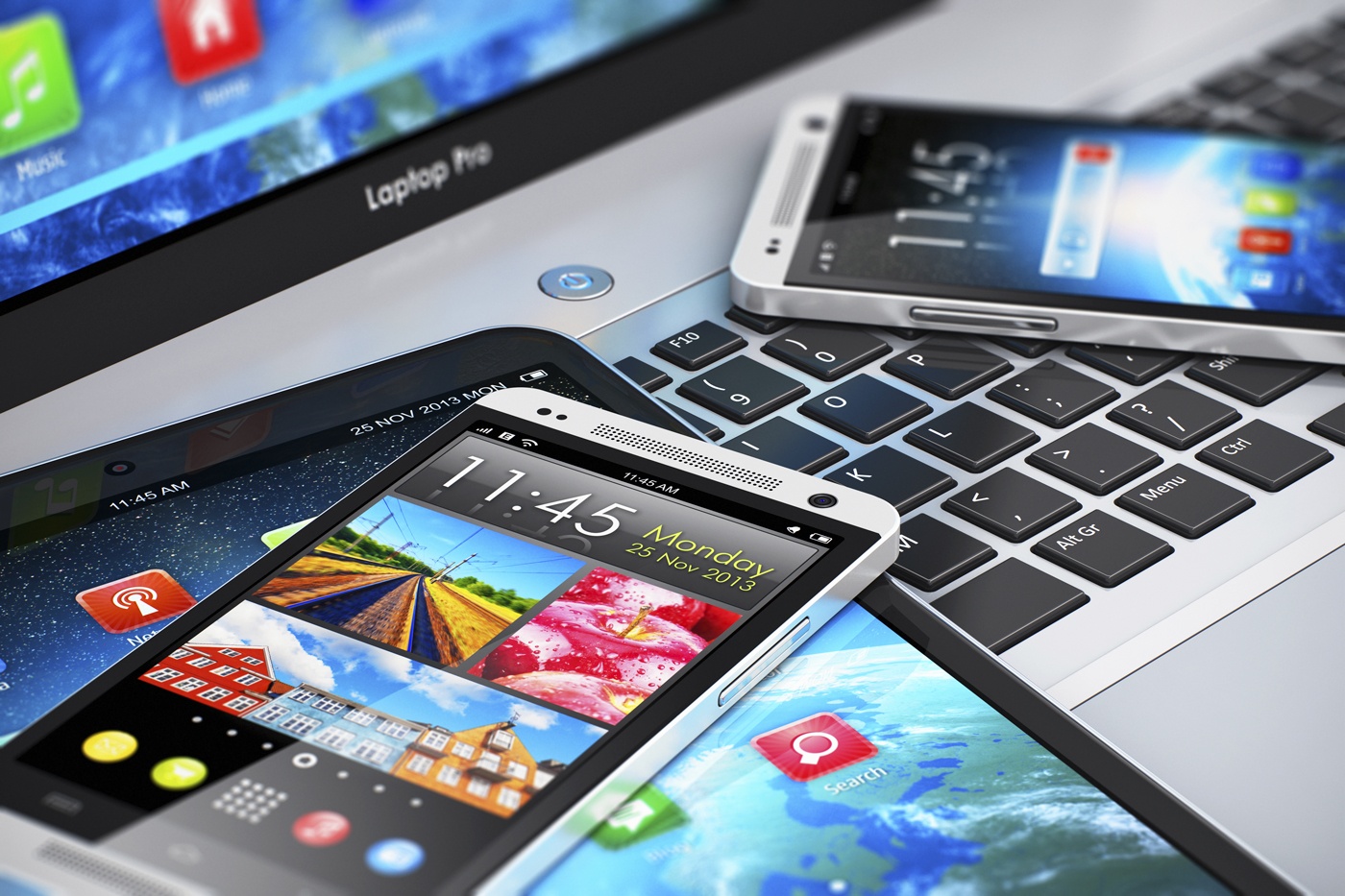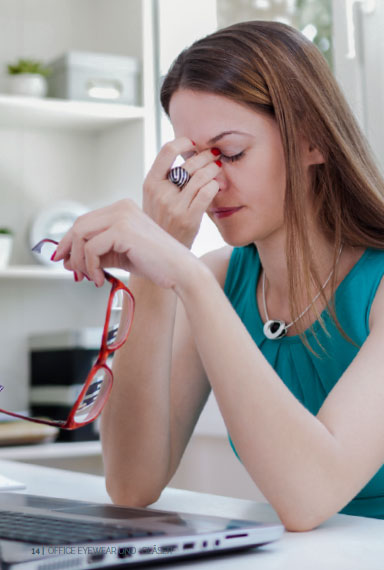Blue light – The constant danger emanating from the display screen
Scientific studies prove the dangers of blue light for humans. Over the last 10 years, users have experienced an increasing level of disequilibrium when it comes to their biorhythm.
Causes of this include the extended use of highly effective and energy saving LED technologies that are increasing on a daily basis in computers, tablets, smart phones, and TV’s.
The impact of blue light on our body
Daylight consists of a colour spectrum, in which all the colours are represented, the so-called spectral colours. The colour blue is strongly amplified. Blue light is perceived positively by the eyes and then signals the brain to be alert, leading to physical activity.
The daily rhythm of life on earth has adjusted to the sunlight
We as people are therefore very active when the sun is shining. Any deviation from the natural daylight however has a direct impact on our biological equilibrium. Light is an important facet of life as our body is full of light sensitive cells.
Visual perception is controlled by the retina of the eyes.
The retina processes the incoming light by means of a multitude of light sensitive cells and channels it to the brain as image information. It consists of multiple cellular layers, among others the sensitive Melanopsin Ganglion Cells. The highest sensitivity of these cells are in the blue range. These photo receptors are not only responsible for visual perception, but also connected to a number of areas in the brain, in particular the Epithalamus in the area of the Pineal Gland. With this gland the sensitive Melanopsin Ganglion Cells directly influences the distribution of the hormone Melatonin.
Melatonin as control unit for the biorhythm
Melatonin is a hormone that controls the human biological rhythm. The melatonin level in the blood slowly increases as it gets dark and signals to the body the natural propensity for sleep. The melatonin level falls again the next morning, as its production is inhibited by daylight.
Blue light while doing your everyday work but also in your free time
Today almost every screen-based workplace has an LED-flatscreen. This includes laptops, Tablets, PC’s, LED TV’s and smart phones, all of which are used intensively on a daily basis. All these technical devices operate with LED background lighting. These omit an unnaturally high portion of blue light
You only have a low portion of beneficial red light, which has a regenerative effect. Red light promotes the cell regeneration in the human body, whilst blue light opposes it. Many offices and work spaces are illuminated by fluorescent lighting; this also emits a high portion of blue light.
What this means for us as people
Suppression of melatonin production leads to distortions of the biorhythm! According to studies by the Federal Statistics Office, around 80% of the working population in Germany spend the majority of their work day in front of a computer. This may even extend into the evening hours, where one is working under artificial light. This flooding with blue light tricks the body into thinking it is daylight, the production of melatonin is hindered, and the biorhythm of the body changes. The natural propensity for sleep is suppressed and the body reacts in an unnatural way, leading to stress symptoms and sleep disruption.
Damage to the retina as a result of intensive blue light stress
The eyes are exposed to uninterrupted optical irritation. Everything that we observe directly, is displayed on the macula of the retina. The macula is the most important part of the retina. With the largest density of photo receptors, it is able to resolve the finest point of human vision. The photo receptors outside the macula and on the periphery of the retina are for ambulatory vision. The non-visible UV rays are, to a large extent filtered out by the eye lenses in a natural manner, while the blue light can penetrate the eyes almost unhindered.
When working with LED displays we focus on a source of blue light for hours on end.
This blue light portion has an oxidizing effect on the photo receptors of the retina, in particular on the macula and can, in cases of intensive blue light stress even destroy the photo receptors. Experts believe that this can cause irreparable damage to the entire retina over time and also promote Age Related Macula Degeneration.
AMD – Age Related Macular Degeneration
This eye disease is the main cause of severe visual impairment in persons above approximately 60 years of age. Photo receptors that have been destroyed leave behind a blacked out area within the range of vision. The larger the area of the destroyed photo receptors is, the larger the observed blind spot. Advanced Age Related Macular Degeneration can even lead to blindness.
Conclusion
As shown in this article, blue light, because of its strong influence on the distribution of melatonin, is actually a control unit for the human biorhythm. Too much blue light can disturb the sensitive system of the phases of wakefulness and sleep.
This often results in a shorter and restless sleep duration, which then does not provide the body with sufficient recovery time. The physical stress and the susceptibility to mental stress increases.
This needs to be protected against. On the one hand, it is important to think about one’s behaviour in terms of using modern screen devices. On the other hand, one should look at enforcing the use of the latest eyewear lens technology.






